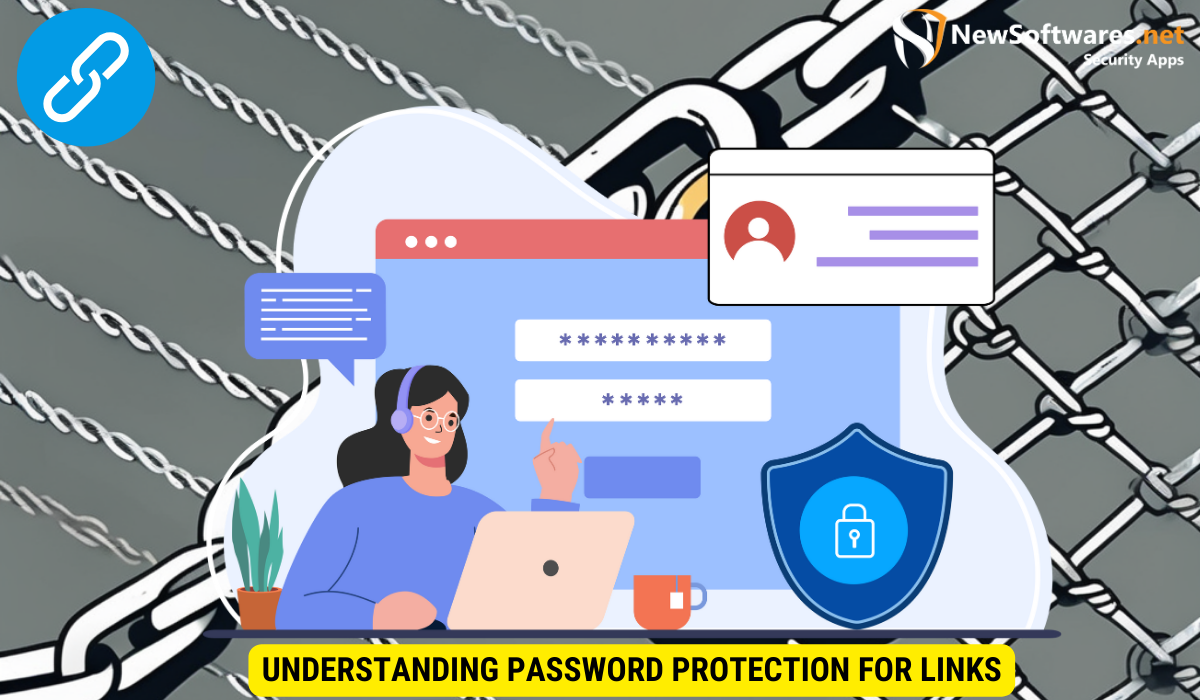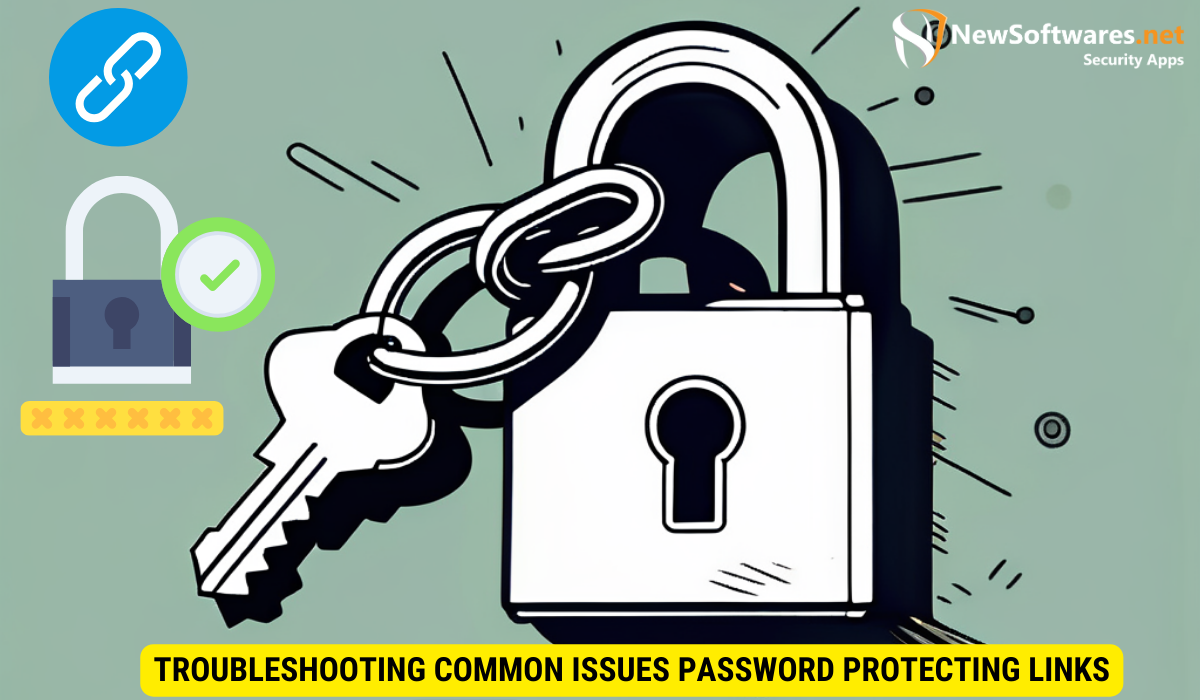Password-protecting links is a crucial security measure that controls access to sensitive information by requiring a password to view the content. This process involves choosing a robust password, applying it through a reliable service, and regularly updating it to ensure continued security.
In this digital age, protecting sensitive information has become a top priority for individuals and businesses alike. When it comes to sharing links, password protection offers an extra layer of security. By password-protecting your links, you can ensure that only authorized individuals have access to the valuable content you are sharing. Together, we will explore the importance of password protection for links and provide you with a step-by-step guide on how to implement it effectively. Let’s dive in!
Understanding Password Protection for Links

Before we delve into the process of password-protecting your links, it is essential to understand the importance of this security measure. Password protection restricts access to your links, ensuring that only those who possess the correct password are granted entry. This added layer of security prevents unauthorized individuals from accessing confidential information or sensitive content. Protect your links and maintain control over who can view your valuable resources.
The Importance of Password-Protecting Links
When you share a link, you want to ensure that only the intended recipients can access it. Password protection guarantees that your links are only accessible to those who possess the correct password. This is particularly crucial when sharing sensitive information, such as financial documents, personal data, or proprietary content. By implementing password protection, you can maintain confidentiality and protect yourself and your resources from potential security breaches.
How Password Protection Works
The process of password protection involves encrypting your link with a secure password that individuals must enter to gain access. When someone tries to access your password-protected link, they will be prompted to enter the correct password. If the password is incorrect or not entered at all, access will be denied. This simple yet effective method provides an additional barrier to keep your valuable content safeguarded.
Now, let’s take a closer look at how password protection works in practice. When you decide to password-protect a link, you’ll typically have the option to choose a password that is both secure and memorable to you. It’s important to select a password that is not easily guessable, combining a mix of uppercase and lowercase letters, numbers, and special characters. This will help ensure that unauthorized individuals cannot gain access to your protected content.
Once you have chosen a password, the link will be encrypted, making it virtually impossible for anyone to access the content without the correct password. When someone attempts to access the link, they will be presented with a login screen or a prompt to enter the password. This acts as a gatekeeper, allowing only those with the correct credentials to proceed.
Furthermore, password protection often comes with additional features to enhance security. For example, you may have the option to set an expiration date for the password, ensuring that access is only granted for a specific period. This is particularly useful when sharing time-sensitive information or when you want to limit access to a certain event or campaign.
In conclusion, password protection for links is an essential security measure that allows you to control who can access your valuable resources. By encrypting your links with a secure password, you can ensure that only authorized individuals can view your content, protecting it from potential security breaches. Remember to choose a strong password and take advantage of additional features, such as expiration dates, to further enhance the security of your password-protected links.
Preparing Your Link for Password Protection
Before you password-protect your link, there are a few key steps to follow to ensure a smooth implementation. Let’s explore these steps in detail.
When it comes to securing your links with passwords, it’s essential to consider the various layers of protection you can implement. In addition to password protection, you may also want to explore encryption methods or two-factor authentication to enhance the security of your link further. These additional measures can provide an added level of defense against potential security breaches.
Choosing the Right Link
The first step in the process is to choose the link you want to password-protect. Consider which resources require an extra layer of security and identify the critical links that need protection. By carefully selecting the appropriate link, you can focus your efforts on securing the most vulnerable access points.
It’s also important to consider the potential impact of a security breach on the link you are protecting. Evaluate the consequences of unauthorized access to determine the level of protection needed. By understanding the potential risks, you can tailor your security measures to effectively mitigate any threats.
Assessing Security Needs
Next, assess your security needs. Determine the level of sensitivity for the content you are sharing and the potential risks associated with unauthorized access. Understanding your security requirements will help you decide how robust your password protection needs to be and what additional security measures may be necessary.
Consider conducting a thorough risk assessment to identify any vulnerabilities in your current security measures. By proactively addressing potential weaknesses, you can strengthen your overall security posture and better protect your sensitive information. Remember, staying one step ahead of potential threats is key to maintaining the integrity of your protected links.
Step-by-Step Guide to Password-Protecting a Link
Now that you have prepared your link for password protection, it’s time to dive into the step-by-step process of implementing this security measure. Let’s walk through the process in detail.
Ensuring the security of your online content is crucial in today’s digital age. Password-protecting your link adds an extra layer of protection, safeguarding your information from unauthorized access. Let’s delve deeper into the intricacies of password protection and how you can fortify your link against potential threats.
Choosing a Password Protection Service
The first step is to choose a reliable password protection service. There are various options available, each with its own features and benefits. Research and select a service that aligns with your requirements and offers the necessary level of security for your needs.
Consider factors such as encryption levels, user authentication methods, and ease of use when evaluating different password protection services. Opt for a service that not only meets your current needs but also anticipates your future security requirements as your online presence grows.
Setting Up Your Password
Once you have selected a password protection service, it’s time to set up your password. Choose a strong password that is difficult to guess but easy to remember. Avoid common or easily guessable combinations and consider using a combination of letters, numbers, and special characters.
Remember, the strength of your password is paramount in ensuring the security of your link. Regularly update your password and avoid sharing it with unauthorized individuals to maintain the integrity of your protected content.
Applying Password Protection to Your Link
After setting up your password, it’s time to apply the password protection to your link. Simply follow the instructions provided by your chosen password protection service. They will guide you through the process of securing your link and applying the password protection effectively. Ensure that you follow each step carefully to ensure the highest level of security.
By diligently following these steps and staying proactive in your approach to online security, you can create a robust defense mechanism for your valuable content. Stay informed about the latest security trends and technologies to continuously enhance the protection of your password-protected links.
Troubleshooting Common Issues Password-Protecting Links

While password protection offers robust security, there may be instances where issues arise. Let’s explore some common issues and their solutions.
When dealing with password-protected content, it’s essential to consider the complexity of the password you set. If your password is too simple or easily guessable, it may compromise the security of your link. Opt for a combination of letters, numbers, and special characters to enhance the strength of your password and reduce the likelihood of unauthorized access.
Forgotten Passwords
If you forget your password, don’t panic. Most password protection services offer a password recovery option. Follow the instructions provided by the service to reset your password and regain access to your link.
Additionally, consider using password management tools to securely store and retrieve your passwords. These tools can help you keep track of your login credentials and prevent the inconvenience of forgetting passwords in the future.
Link Accessibility Issues
Sometimes, individuals who possess the correct password may encounter difficulties accessing your link. Ensure that you have provided clear instructions on how to access the link and troubleshoot any technical issues that may arise. Communicate with your intended recipients to address any access problems promptly.
Furthermore, consider the compatibility of the devices and browsers used by your recipients. Certain password protection mechanisms may not function correctly on all platforms. Encourage users to update their browsers and operating systems to ensure seamless access to your protected content.
Maintaining Your Password-Protected Links
Once you have successfully password-protected your links, it is crucial to maintain them effectively. Let’s explore some essential steps to ensure the ongoing security of your password-protected links.
Regularly Updating Your Password
As with any security measure, regularly updating your password is essential. Set a reminder to change your password periodically, and choose a new, strong password each time. This practice minimizes the risk of unauthorized access and ensures that only authorized individuals have continued access to your valuable resources.
Monitoring Link Usage
Stay vigilant by monitoring the usage of your password-protected links. Check access logs provided by your chosen password protection service to identify any suspicious activity or unauthorized attempts to access your links. Promptly investigate any concerning activity and take appropriate action to maintain the security of your resources.
Key Takeaways
- Enhanced Security: Password protection adds a critical layer of security, ensuring that only those with the correct password can access the link.
- Control Over Access: You can control who views your content, protecting sensitive information from unauthorized access.
- Easy to Implement: Many services offer straightforward methods to password-protect links, making it accessible to both individuals and businesses.
- Regular Updates: Regularly updating your password and monitoring link usage are essential practices for maintaining security.
- Troubleshooting: Being prepared to handle common issues like forgotten passwords or accessibility problems ensures smoother operation.
FAQs
How can I choose a strong password for my link?
Opt for a password that combines uppercase and lowercase letters, numbers, and special symbols. Avoid common phrases and consider using a password generator for added security.
Can I use the same password for multiple links?
It’s safer to use unique passwords for different links to prevent widespread access if one password is compromised.
What should I do if someone unauthorized accesses the link?
Change the password immediately, review access logs to understand the breach, and consider additional security measures like two-factor authentication.
How often should I change the password for a protected link?
It depends on the sensitivity of the content, but typically every 3 to 6 months or any time you suspect that the password may have been compromised.
Is there a way to track who accesses my password-protected link?
Some password protection services offer access logs that show when and possibly where (by IP address) your link has been accessed, helping you monitor unauthorized attempts.
In Conclusion
By password-protecting your links, you can ensure that only authorized individuals have access to your valuable content. This added layer of security helps maintain confidentiality, prevent security breaches, and protect sensitive information. Follow the step-by-step guide outlined in this article to effectively password-protect your links. Additionally, troubleshooting common issues and maintaining your password-protected links will ensure ongoing security. Take control of your link accessibility and safeguard your resources with password protection today.
